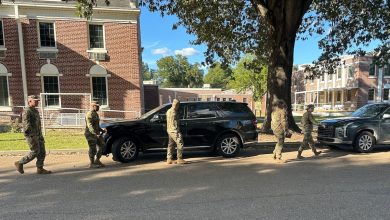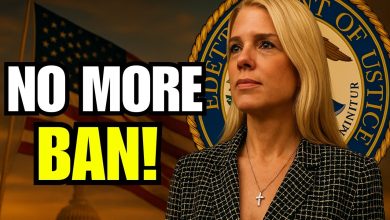Fort Cavazos renamed Fort Hood, honoring WWI soldier

Fort Cavazos, Texas, has been renamed Fort Hood, this time honoring a World War I soldier, Col. Robert Benjamin Hood.
The ceremony took place Monday at the III Armored Corps Headquarters. Col. Mark McClellan, garrison Fort Hood commander along with installation Sgt. Maj. Loyd Rhoades cased the Fort Cavazos colors and unfurled the Fort Hood colors.
Hood was a Distinguished Service Cross recipient who was dedicated to his soldiers and deeply respected by his peers and subordinates, said III Armored Corps and Fort Hood Commanding General Lt. Gen. Kevin Admiral.
“Col. Hood represents the ideal citizen-soldier, a man who rose to the occasion when his nation needed him most and continued to give back long after the fighting had ceased,” Admiral said. “In recognition of his service, Col. Hood’s name will live on as generations of soldiers who served and will serve here learn about his career and the impact he had on our Army.”
Hood’s daughter, Mitzi Huffman, called the redesignation in her father’s name humbling and overwhelming.
“I’ve been very humbled,” she said. “He never talked about his military experience. I did not know that he had a Distinguished Service Cross until we were preparing him for burial in Arlington.”
Hood was born April 8, 1891, in Wellington, Kansas, according to an Army release. He graduated from Kansas State Agricultural College — now Kansas State University — located in Manhattan, Kansas, in 1914.
He was commissioned as a second lieutenant in the U.S. Army on Aug. 8, 1917, and served with Echo Battery, 12th Field Artillery Regiment, 2nd Infantry Division.
During a firefight near Thiaucourt, France, then-Capt. Hood “displayed extraordinary courage and tactical brilliance as he expertly maneuvered his artillery battery under a barrage of heavy and persistent enemy fire,” according to the award narrative.
“After his initial gun crews were lost to German artillery and machine gun fire, he rapidly reorganized his unit, restoring its combat capability in short order,” Admiral said. “His actions earned him the nation’s second-highest military honors.”
Hood received the Distinguished Service Cross for his actions under fire on Sept. 12, 1918.
Hood continued his Army service, surviving the Pearl Harbor attack while stationed at Schofield Barracks, Hawaii. He later commanded an artillery training unit at Fort Sill, Oklahoma, during World War II.
He retired in 1961 as a colonel after 44 years of service. Hood died on Oct. 12, 1964, and is buried in Arlington National Cemetery in Arlington, Virginia.
“During the [interwar period], these [years] were marked by reflection and innovation within our Army, and officers like Col. Hood played essential roles in training, doctrine, development and mentorship of younger Soldiers,” Admiral said. “His dedication to these efforts ensures that the U.S. military was ready for action for World War II and beyond.”
Fort Hood was originally redesignated Fort Cavazos on May 9, 2023, in honor of the late retired Gen. Richard E. Cavazos, who served as III Corps commanding general between 1980 and 1982, as part of a congressionally mandated effort to rename nine Army installations named for Confederate soldiers.
Cavazos was a Silver Star and two-time Distinguished Service Cross recipient for valorous actions during combat in both the Korean War and Vietnam War. He was posthumously awarded the Medal of Honor in 2025 for his actions in the Korean War.
Fort Hood’s original namesake was Confederate Gen. John Bell Hood.
The Naming Commission, established by Congress in the 2021 National Defense Authorization Act, was tasked with “assigning, modifying or removing of names, symbols, displays, monuments and paraphernalia to assets of the Department of Defense that commemorate the Confederate States of America (CSA) or any person who served voluntarily with the CSA,” according to the release.
Fort was renamed for Col. Hood on June 11, 2025, following an announcement by President Donald Trump that all nine installations would revert to their original names, in honor of recognized military heroes.
Todd South has written about crime, courts, government and the military for multiple publications since 2004 and was named a 2014 Pulitzer finalist for a co-written project on witness intimidation. Todd is a Marine veteran of the Iraq War.
Read the full article here









